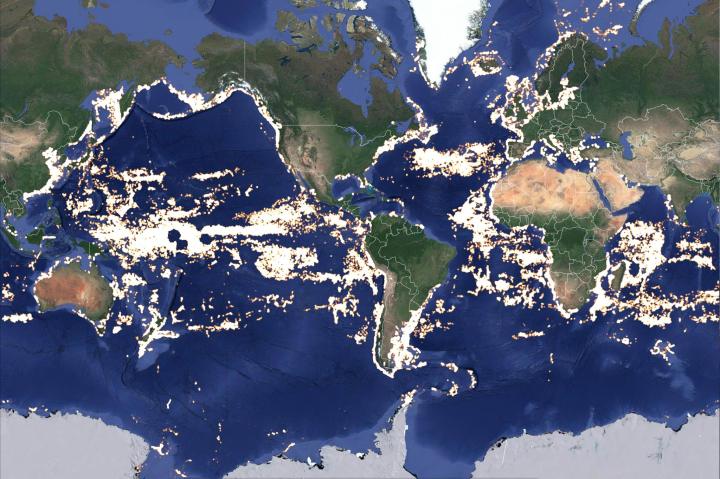
On Thursday, the internet giant launched the Global Fishing Watch, a new initiative meant to “increase awareness of fisheries and influence sustainable policy through transparency.” By way of a new partnership with non-profits Oceana and SkyTruth, Google is getting into the oceans and combining “cloud computing technology with satellite data to provide the world’s first global view of commercial fishing activities.”
While many of us around the world partake in the culinary riches of the sea, there’s little information readily available on a global basis regarding fishing activity. The Global Fishing Watch is looking to change that. All industry participants, from governments to private citizens to industry leaders, will be given new insights on how to “visualize, track, and share information” about fishing. And it couldn’t come at a more crucial time.
As Google notes in a blog post announcement, “Fisheries are intertwined with global food security, slave labor issues, livelihoods, sovereign wealth and biodiversity, but our fisheries are being harvested beyond sustainable levels. Fish populations have already plummeted by 90 percent for some species within the last generation, and the human population is only growing larger.” Around 20 percent of fish in global markets are illegally harvested, or go unregulated.
But technology may hold the answer to this difficult problem.
Google intends to apply machine learning technology to keep tabs on the 200,000 vessels that, at any given time, are publicly broadcasting their locations through the Automatic Identification System (AIS). Ultimately, hundreds of thousands of vessels contribute more than 22 million data points every day, and Google can parse through this information to determine the type of ship, fishing gear, and fishing locations of each vessel.
“We then apply that learning to the entire dataset — 37 billion points over the last 4.5 years — enabling anyone to see the individual tracks and fishing activity of every vessel along with its name and flag state,” Google said.
The end result, the company says, will be to “help inform sustainable policy and identify suspicious behaviors for further investigation.” A better understanding of where the most overfishing is taking place can aid governments in developing rules and regulations to create a more sustainable seafood future. “Our hope is that this new technology can help governments and other organizations make decisions about which areas need protection and monitor if policies are respected,” Google concluded.
So do as the tech giant says, and “explore your ocean at www.globalfishingwatch.org.”
Editors' Recommendations
- 5 web browsers you should use instead of Google Chrome or Edge
- How to use Google Gemini, the main challenger to ChatGPT
- Check your inbox — Google may have invited you to use Bard, its ChatGPT rival
- Why I still use Microsoft’s Office suite instead of Google’s free options
- Use Google Chrome on Mac? You need to update now

